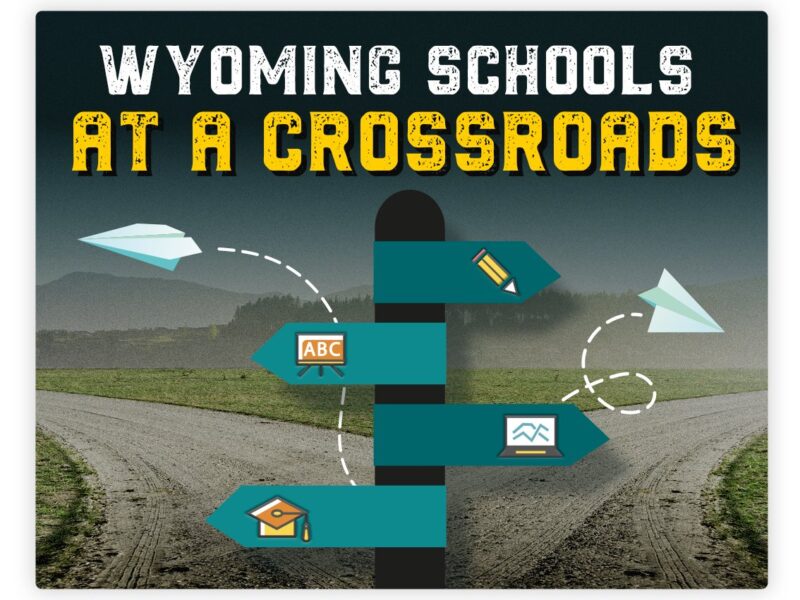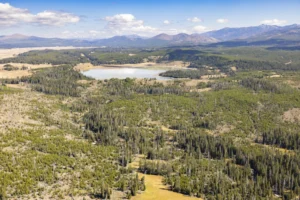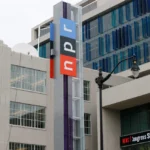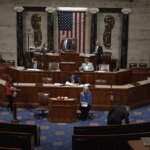WYOMING SCHOOLS AT A CROSSROADS: Lawmakers Open the Door to More Charter Schools, but Teachers Worry About the Impact (Part 1)
Senate leader says charter schools offer a ‘conservative’ alternative to traditional schools
- Published In: Other News & Features
- Last Updated: May 09, 2023

By David Dudley
Special to the Wyoming Truth
This week, the Wyoming Truth is examining charter schools in a three-part series that addresses recently passed legislation and new charter schools that will open their doors in the fall.
A trio of new charter schools are opening in Wyoming this fall – and more could follow in the coming years after the Wyoming Legislature passed Senate File 174 in March. Sponsored by Sen. Ogden Driskill (R-Devil’s Tower), the bill aims to streamline the application process for charter schools by creating a new board to approve and oversee them.

Local school boards – which oversee traditional public schools – decided whether to authorize new charter schools. But in 2021, in an effort to make the process easier, lawmakers gave that power to the State Loan and Investment Board (SLIB) as well. Last summer, the SLIB approved the Cheyenne Classical Academy, Wyoming Classical Academy in Casper and Prairie View Community School in Chugwater. They’re set to open this year and join five other charter schools already operating in the state.
The Legislature placed a moratorium on any additional charters until 2026. But after that, SF 174 empowers the new Wyoming Charter School Authorizing Board to green light new charter schools, monitor their performance and manage renewal requests from existing schools.
It’s too soon to know if the change will lead to an increase in charters, but Driskill looks forward to seeing how it plays out.
“As we’ve evolved in education, our K-12 system has become a very different system than it was 30, 40, 50 years ago,” Driskill told the Wyoming Truth. “I’m not saying it’s good or bad, but it’s turned into a fairly liberal system of education directed strongly towards traditional college education.”
He added, “In my opinion, it’s not for everyone anymore. And so school choice plays an increasingly important role, particularly if you want a more traditional, conservative education.”
While advocates say charters increase options for parents and students, detractors worry they could negatively impact public schools, which struggle to provide services with limited funds amid ballooning costs.
In search of options
To be clear, charter schools are public schools. Both they and traditional schools are funded by taxpayer dollars and free to all students. However, while public schools have a set curriculum designed by each school district to meet strict state guidelines, charters have autonomy in determining what they’ll teach.

Charter schools have become increasingly popular since former U.S. Secretary of Education Betsy DeVos introduced them to the national education conversation as an alternative to traditional schools. In 2018, she told an audience at the United States Conference of Mayors that “public education is not a public good or a public trust, but is best understood as a business being badly run by the government.”
Today, the National Alliance for Public Charter Schools reports 7,800 charter schools serving 3.7 million students nationwide. Currently, five public charter schools serve 668 of the state’s 91,640 students.
While critics charge that charter schools fail at a high rate, a U.S. Government Office of Accountability report found that 1.4% to 2.3% of charters closed within five years .
Todd Ziebart of the National Alliance for Public Charter Schools works with partners across the U.S., including Driskill, to develop legislation that benefits charter schools. He said contention around them is common in urban, suburban and rural areas.
“Yet the need for them is in all of those places,” Ziebart told the Wyoming Truth. “I think before the pandemic, we saw evidence through family decisions, through survey data, that families want more options. And that was just amplified during the pandemic.”
Rep. Jared Olsen (R-Laramie), one of SF 174’s sponsors and a member of the Cheyenne Classical Academy board, said the bill “creates a path forward for more school choice for parents across Wyoming.”
“Which is important, because parents want to be involved in their kids’ education,” he added. “They want to have a choice in where their kids go, and how their kids are educated.”
While charter school conversations are contentious in Wyoming, Olsen said it doesn’t need to be this way.
“We hope that our traditional public schools and our charter schools can grow together and interact together,” he said. “I would like to see charter schools cooperating with their local districts and working together for the betterment of the students.”
Fighting for funding
The bill also will ensure that charter schools, which operate independently of school districts and may be run by nonprofit or for-profit organizations, receive as much state funding as traditional public schools.
The Wyoming Department of Education determines school funding using a metric called “average daily membership,” which records the number of students in a given school during the previous academic year. Since 2008, the state’s annual funding for K-12 education rose from $1 billion to $1.5 billion, according to a report shared by the Wyoming Legislature.
Thanks to revenue from the state’s mineral wealth, Wyoming’s education funding is among the highest in the nation, at $16,200 each year per student. Charter schools have received 80% of the funding allocated to public schools. Under SF 174 charters are eligible for identical funding.

State dollars follow students when they choose a charter over a traditional public school, but “I don’t necessarily view that as bad,” Olsen said. “If the student is no longer there, then the funding for that student is no longer needed. I also don’t view that as competition necessarily. Different students have different needs, and they should be able to attend the school that best meets their needs.”
But Tate Mullen, government relations director for the Wyoming Education Association (WEA), which represents 6,000 teachers in Wyoming, sees it differently.
“I’m opposed to the new charter legislation, because it’s couched as an opportunity to increase school choice,” Mullen said. “In fact, making it easier to open new charter schools will have the opposite effect.”
As new charter schools emerge, they draw resources away from public schools. “When that happens, traditional schools may be forced to operate with increasingly limited resources per student or even to close, leading to fewer options for parents,” Mullen said.
Mullen said lawmakers must meet the state’s obligation to fund its existing schools before seeking to expand charter school offerings. Last August, the association sued the State of Wyoming, alleging the Legislature has ignored the cost-based funding model for two consecutive years and failed to provide an adequate external cost adjustment. The case is ongoing.
A continuing battle
Rep. David Northrup (R-Powell) identified a number of problems with SF 174 as it was originally drafted and revised it with the help of multiple colleagues.
“The way that bill was written, it was a lawsuit waiting to happen,” Northrup told the Wyoming Truth. “There was no accountability. There were no certified teachers. And the bill tried to give more funding per student to charter school[s] than public schools.”
While Northrup is pleased with the final version, he recognizes that “everybody did not get what they wanted.”
Driskill called the final version of SF 174 “a product of compromise” and said he’s working on a slate of new bills to overhaul the state’s education system.
“We got maybe 40% of the way to where we’d like to be,” Driskill said. “We were fought very heavily by traditional education, teachers’ unions and our school boards association. They don’t want anything that competes with their system at any cost, even if it means reforming their own system and making it better.”
For his part, Mullen said the education association’s goal is to ensure the Legislature meets its constitutional obligation to fund all facets of public education.
While the association’s suit against the state makes its way through the court system, the three new charter schools are preparing to welcome students this fall.
Check back tomorrow for part two.













